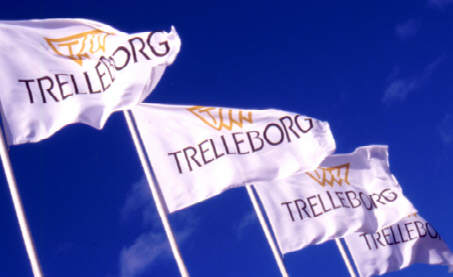|
Trelleborg: New subsea gas compression
technology
The recently launched
Åsgard subsea compression project in the Norwegian Sea is the world’s
first-ever subsea gas compression facility and a pioneering development
for the industry.
August 08, 2014 + + +
An issue for many subsea oil and gas fields is that decreasing natural
pressure is reducing recovery and shortening the lifetime of fields.
Owners of the Åsgard oilfield, situated some 200 kilometres off the coast
of Norway, have developed a process that could bring benefits to the oil
and gas industry for years to come.
Set for completion in 2015, the groundbreaking
project will use subsea gas compression technology to maintain production
and boost recovery from the Midgard and Mikkel reservoirs by the
equivalent of about 278 million barrels of oil.
Åsgard field operator Statoil states on its
website: “With Åsgard subsea gas compression, we are one step closer to
realizing our vision of a subsea factory. Subsea processing, and gas
compression in particular, is an important technology advance to develop
fields in deep waters and harsh environments.”
While this project represents a quantum leap in
seabed technology, the challenging applications will increase the demands
on the equipment used. Apart from being water-resistant, the equipment
must withstand the temperatures and hydrostatic pressures found in
deep-sea beds.
At these depths, fluids become warmer,
resulting in a significant temperature difference compared with the
surrounding seawater. This can cause piping wax build-up and eventually
clogging, potentially leading to costly production downtime and repairs.
Sophisticated thermal insulation is crucial to ensure a steady fluid flow.
With this in mind, Aker Solutions, contractor
of the Åsgard subsea compression system, will apply Trelleborg’s
high-performance Vikotherm R2 subsea insulation to 600 meters of piping. A
well-proven solution, the material can easily be adapted to the varying
geometries, surfaces and applications of the installation.
The rubber-based composite Vikotherm R2 system
insulates and protects jumpers, manifolds, risers, pipelines, flow lines,
equipment and other subsea structures. Maintenance-free, the product is
designed to last the installation’s lifetime, a minimum of 30 years, so it
will never normally require replacement.
“Vikotherm R2 is practically incompressible and
both seawater- and impact-resistant,” says Oddvar Kopstad, Sales Manager
Subsea at the Trelleborg Offshore & Construction facility in Norway. “It
effectively withstands both low and high temperatures and provides
corrosion and mechanical protection. Competing systems may have the same
individual properties but are unable to offer all of them as one package.”
Vikotherm R2 is made up of three layers, all
bonded to one another. The inner layer is chemically bonded to the
structure surface, ensuring protection against corrosion, HISC
(hydrogen-induced stress cracking) and disbondment. The middle layer
provides thermal insulation, and the outer layer protects against
mechanical and water ingress.
“The layer thicknesses and properties are
extremely flexible,” Kopstad explains, “making it easy to adjust to
environmental challenges and customer requirements.”
Launched in 2012, the Vikotherm R insulation
builds on the success of its former generation, first manufactured in the
late 1980s. The updated material has been subjected to years of rigorous
testing, including lifetime evaluations, long-term simulated service tests
and full-scale qualification tests. A notable upgrade to Vikotherm R2 is
that it can be applied either on-site or at Trelleborg’s production
facility in Norway. “The growing global subsea market increasingly focuses
on flexibility, delivery time and quality,” says Kopstad. “So it is a huge
advantage to be able to apply it on-site, anywhere in the world.”
Application at the plant involves high-pressure
and high-temperature vulcanization (typically +140°C/ +284°F) in an
autoclave. Field vulcanization is done at ambient pressure without an
autoclave, but it retains the same properties.
With a market share of 20 to 25 percent and
advanced growth plans, the future looks bright for Vikotherm R2. “In 2013,
Trelleborg saw a very big increase in the specification of this solution,”
Kopstad says, “and the company expects to see more growth, much of it as a
direct result of Vikotherm R2’s on-site possibilities.”
For more information
www.trelleborg.com |

Worldwide more than
90,000 paid subscriptions

Worldwide
more than 48,000 subscriptions -
100% one-year direct request
qualification

'What's New' in Upstream, Midstream and
Downstream Products & Services. Circulation 37,000
PennWell
Petroleum Group:
Oil & Gas Journal
Oil & Gas Journal Russia
OGJ_eNewsletter
OGJ-Website-Statistics
Oil, Gas & Petrochem Equipment
Offshore Magazine
Offshore
Russia
Offshore eNewsletter
Offshore
Website Statistics
Oil & Gas Financial Journal
+ + +
For more information, media
kits or
sample copies please contact
Andreas
Sicking
+49 (0)2903-338570
wilhelms@pennwell.com
www.sicking.de
|


